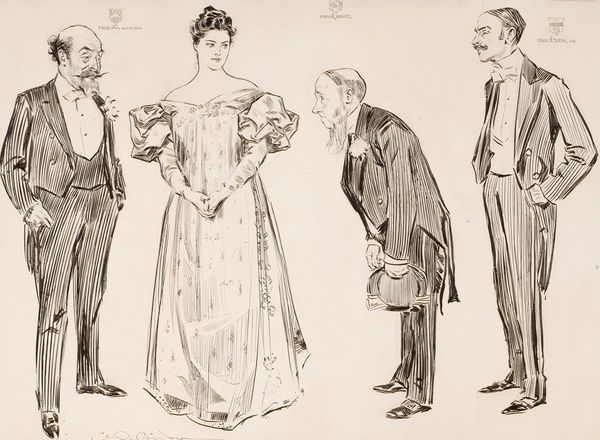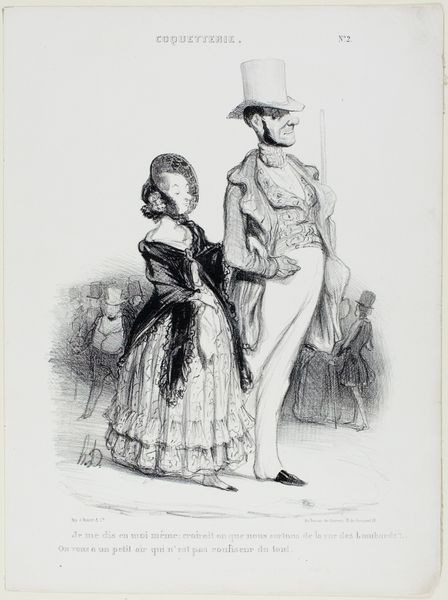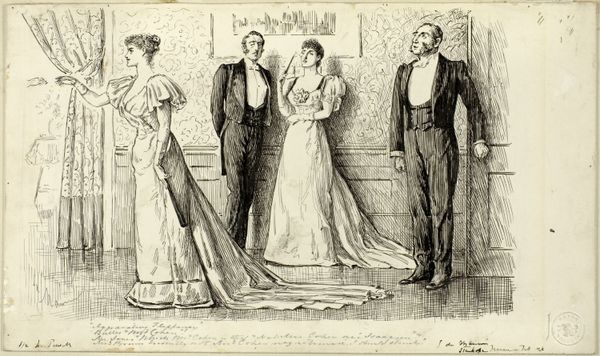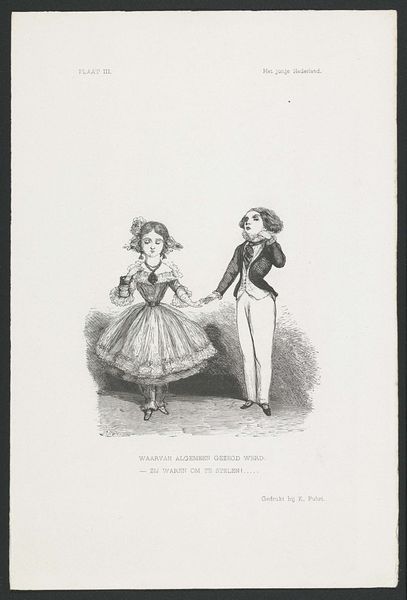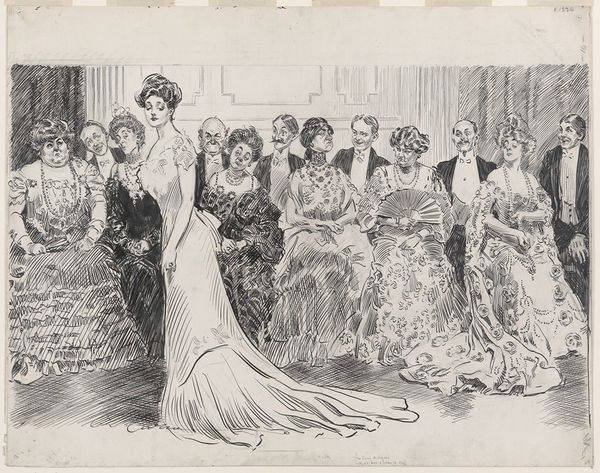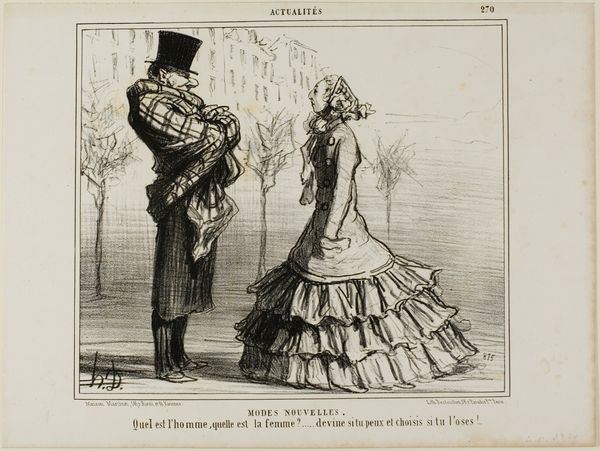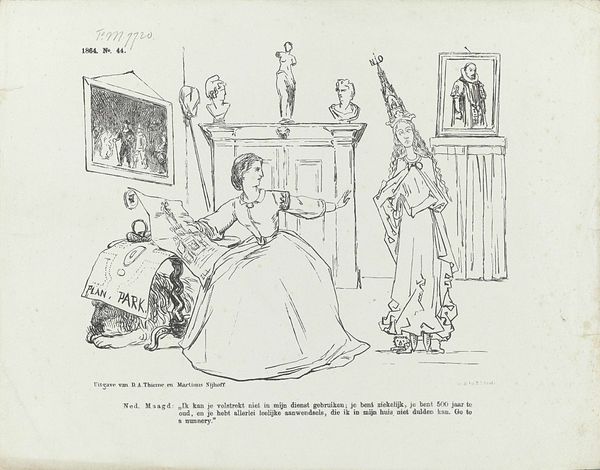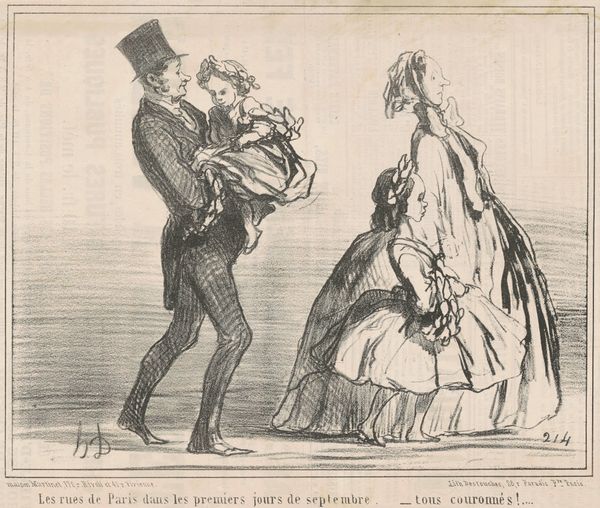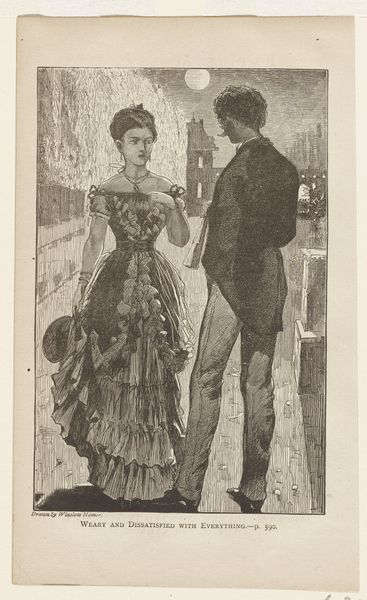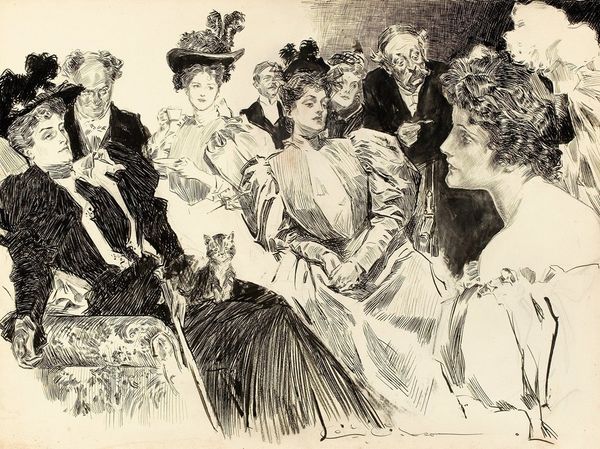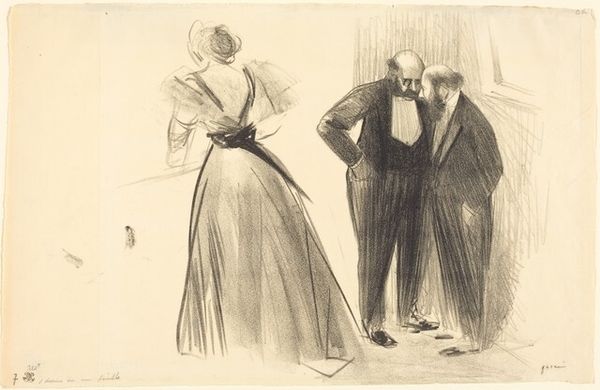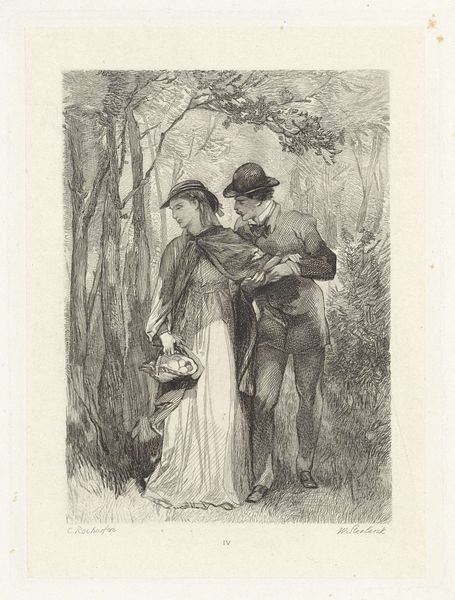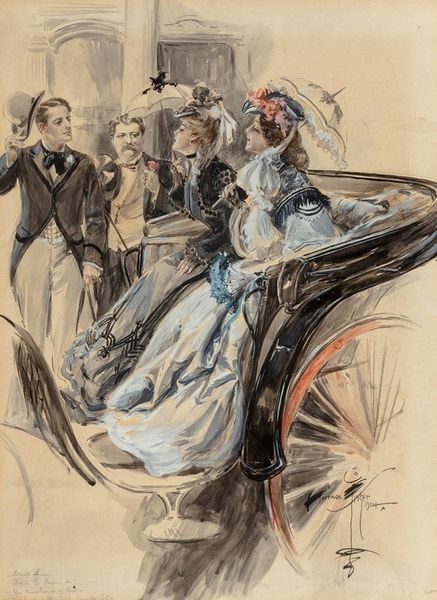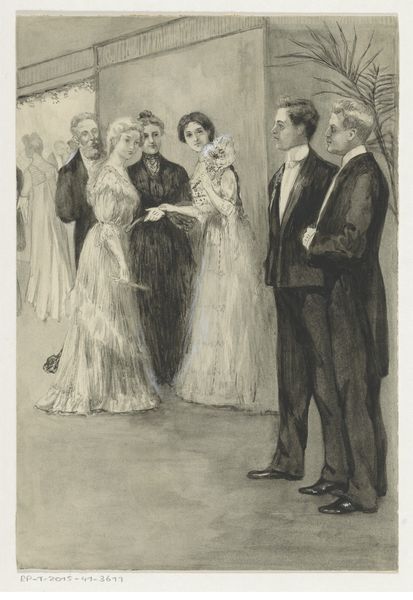
drawing
#
portrait
#
drawing
#
art-nouveau
#
figuration
#
genre-painting
#
academic-art
Copyright: Public Domain: Artvee
Curator: Charles Dana Gibson's 1897 drawing, "Garden of Youth," presents a rather peculiar scene in ink on paper. What's your initial impression? Editor: Honestly? A bit unsettling. The composition feels very deliberate, almost theatrical. The towering figures seem to be observed or perhaps judged by the 'youth' in the garden. It brings forth many themes such as class divide, power and spectatorship. Curator: Right, the materiality of ink and paper allows for the stark contrasts and fine details that define Gibson's style. Consider the labour involved, each precise line contributes to the overall image and ultimately contributes to the commodification of idealized beauty through mass media. Editor: Absolutely, and within that 'idealized beauty', let's consider whose ideals are being perpetuated. The figures are decidedly upper-class and the audience are largely cherubic figures suggesting the purity of observation, innocent judgement perhaps, or naiveté, blind following. The image clearly reinforces the beauty and class of women during the gilded age. Curator: Precisely. Gibson was a master of visual shorthand. His confident use of ink and the lithographic printing processes allowed for broad distribution in publications, solidifying cultural ideals but equally supporting the material wealth needed to mass produce drawings and magazine spreads. Editor: Thinking about how Gibson’s art landed into homes during this period expands it from a drawing into a social phenomenon that enforced normative gender roles. It presents a somewhat unsettling illustration, as a study of power dynamics. I wonder to what degree this piece enforces gender and social inequality within the Gilded Age’s art scene. Curator: The drawing’s reception must have been tied to how his illustrations facilitated social dialogue, allowing the upper crust to view images of themselves and thereby solidify cultural attitudes surrounding femininity, class and art production. The ability of these printed images to enter almost any home and to convey attitudes makes it an artifact about societal production. Editor: Yes, it makes you think about visibility. It underscores how some were perpetually watched, judged, and perhaps controlled, by the societal constructs of the time. It makes you want to ask if they were aware of it, what their actions were as a reaction or resistance. Curator: A fantastic reading! Ultimately the drawing underscores a tension of its time as the means of material production spread, ideas spread even further. Editor: Right, which allows the modern viewer the benefit of interpreting historical images in the light of contemporary understanding. Thank you!
Comments
No comments
Be the first to comment and join the conversation on the ultimate creative platform.
